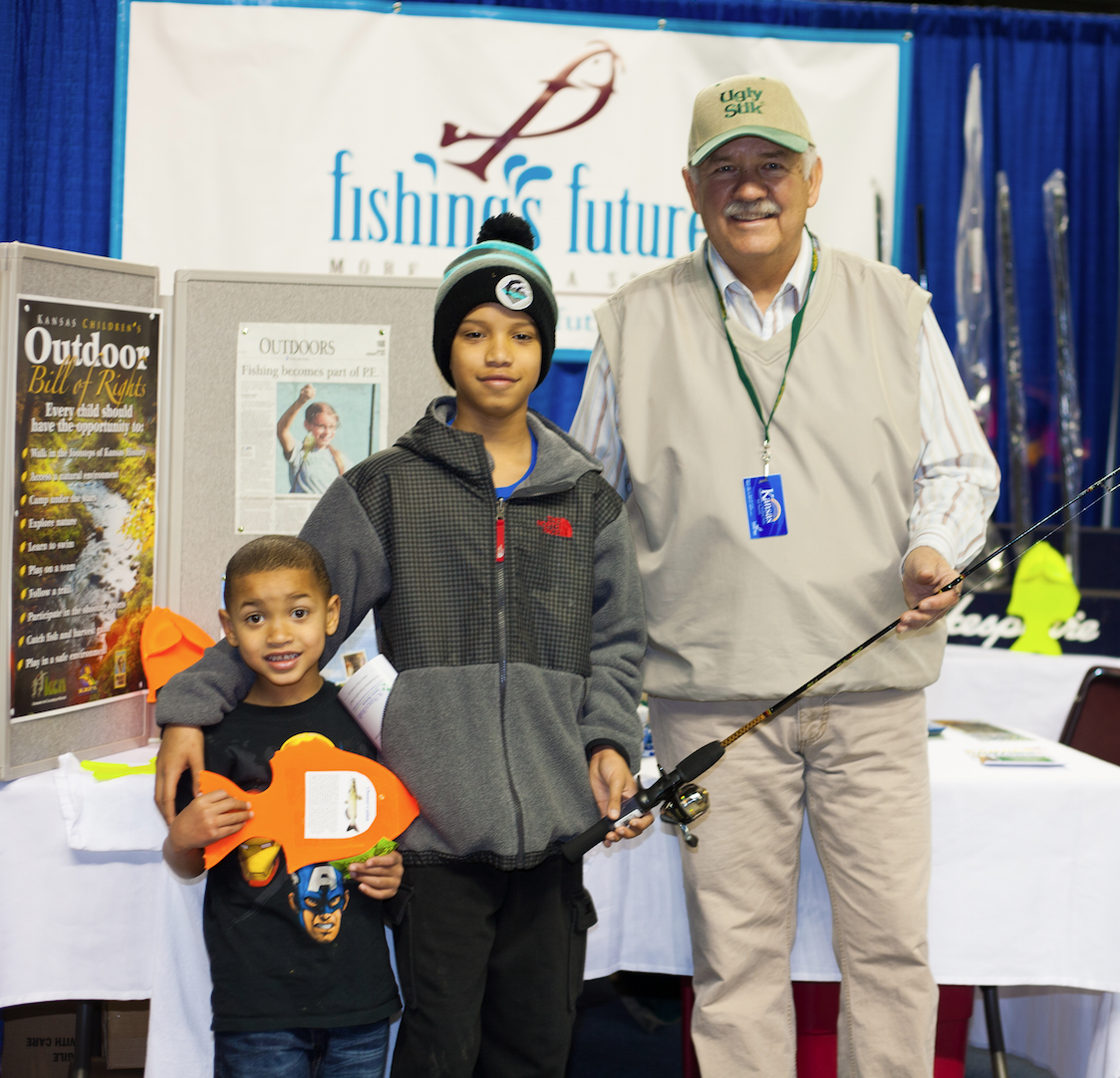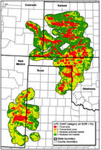The WAFWA announces land enrollment by industry partners
Five oil and gas companies are voluntarily enrolling nearly 1.5 million acres of land under an innovative plan to conserve the lesser prairie-chicken. This represents the first enrollment in the Lesser Prairie-Chicken Range-wide Conservation Plan, developed by the Western Association of Fish and Wildlife Agencies (WAFWA) and state wildlife agencies in Colorado, Kansas, New Mexico, Oklahoma, and Texas.
Continental Resources, Devon Energy, Apache Corp., Occidental Oil and Gas Corporation, and Samson Resources have committed to develop enrolled land in ways that minimize impacts on lesser prairie-chicken habitat. They will also mitigate development impacts that cannot be avoided by providing funding for conservation on private land throughout the region. Other companies in various industries, including oil and gas, pipeline, electric transmission and distribution, and wind energy, are now considering enrollment in the plan.
“The oil and gas industry enthusiastically supports the WAFWA range-wide plan,” said Ben Shepperd, Permian Basin Petroleum Association president. All five enrolling companies are members of the association, which also helped fund aerial surveys to verify chicken populations in 2012.
“We’re proud to see these member companies stepping up early on to support the range-wide plan in a significant way,” Shepperd said. “We believe this plan offers the best, most comprehensive approach available to conserve the lesser-prairie chicken and its habitat, while providing some assurance for participating companies so we can continue to do business.”
The U.S. Fish and Wildlife Service (USFWS) endorsed the range-wide plan in October and verified that companies who enroll would get legal assurances that their business activities could continue if the bird is listed under the federal Endangered Species Act. The federal agency has proposed listing the lesser prairie-chicken as threatened, and is expected to make a final decision in March.
“The Lesser Prairie-Chicken Range-wide Conservation Plan addresses all threats to the species and could represent an alternative to designating the bird as threatened,” said Ross Melinchuk, WAFWA Lesser Prairie Chicken Initiative Council chairman.
The USFWS recently announced it would accept public comments on a proposed special 4(d) rule that “…would exempt from regulation under the Act any activities that harm or result in take of the prairie-chicken if incidental to carrying out the state-developed range-wide lesser prairie-chicken conservation plan. The proposed special rule would also exempt take incidental to routine agricultural practices on existing cultivated lands and to landowner participation in the Natural Resource Conservation Service’s Lesser Prairie-Chicken Initiative.”
Under the range wide plan, mitigation fees are based on actual costs for habitat management and restoration. Fees range depending on factors like the number of acres impacted, quality of habitat affected, and habitat management costs. Basically, developing in higher quality habitat costs more, and working in lower quality habitat and cropland costs less.
“This landmark program allows for industry development within the region and incentivizes farmers and ranchers to conserve and restore habitat for this species,” said Bill Van Pelt, WAFWA Grassland Initiative Coordinator. “WAFWA and state fish and wildlife agency staff are now working to enroll farming and ranching lands with those mitigation dollars.”
Mitigation fees will help fund proven habitat management activities, such as voluntary agreements with landowners to protect or restore native grassland habitat. Already in Texas, as of today, 73 landowners across the Texas Panhandle and Rolling Plains have enrolled 594,253 acres in a similar though separate strategy, voluntary Candidate Conservation Agreements with Assurances, or CCAAs, for the lesser prairie-chicken. Texas CCAA acres have grown more than five-fold since September, 2010. New Mexico has more than 800,000 acres of oil and gas leases enrolled in their CCAA, plus 1.5 million acres of ranch land. Oklahoma has submitted 200,000 acres of ranch land for approval in their CCAA and has requested USFWS to allow enrollment of an additional 200,000 acres.
Besides industry enrollment, landowners are also able to voluntarily enroll in the plan to help conserve and restore habitat for the bird on private land in Texas and other states. In exchange for management practices such as prescribed grazing, burning, and brush management, landowners are assured they can continue to operate under provisions of a management plan if the bird is listed.
The plan includes habitat management goals and voluntary conservation practices to be applied throughout the lesser prairie-chicken’s range, guided by the Crucial Habitat Assessment Tool (CHAT) online database and mapping system (http://kars.ku.edu/geodata/maps/sgpchat/).





